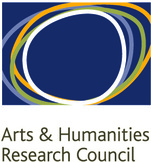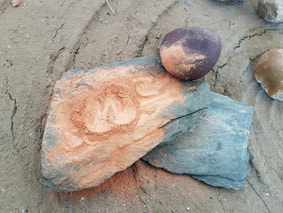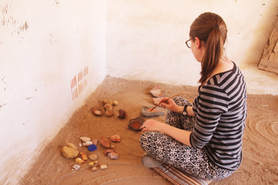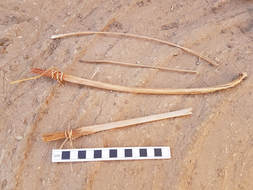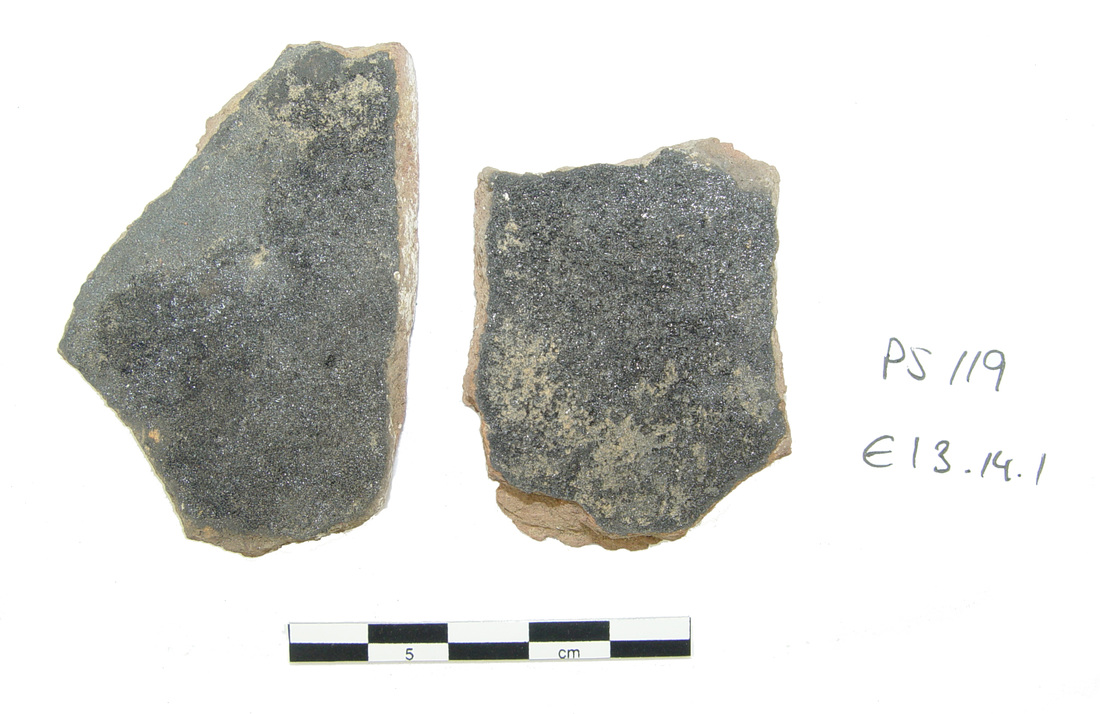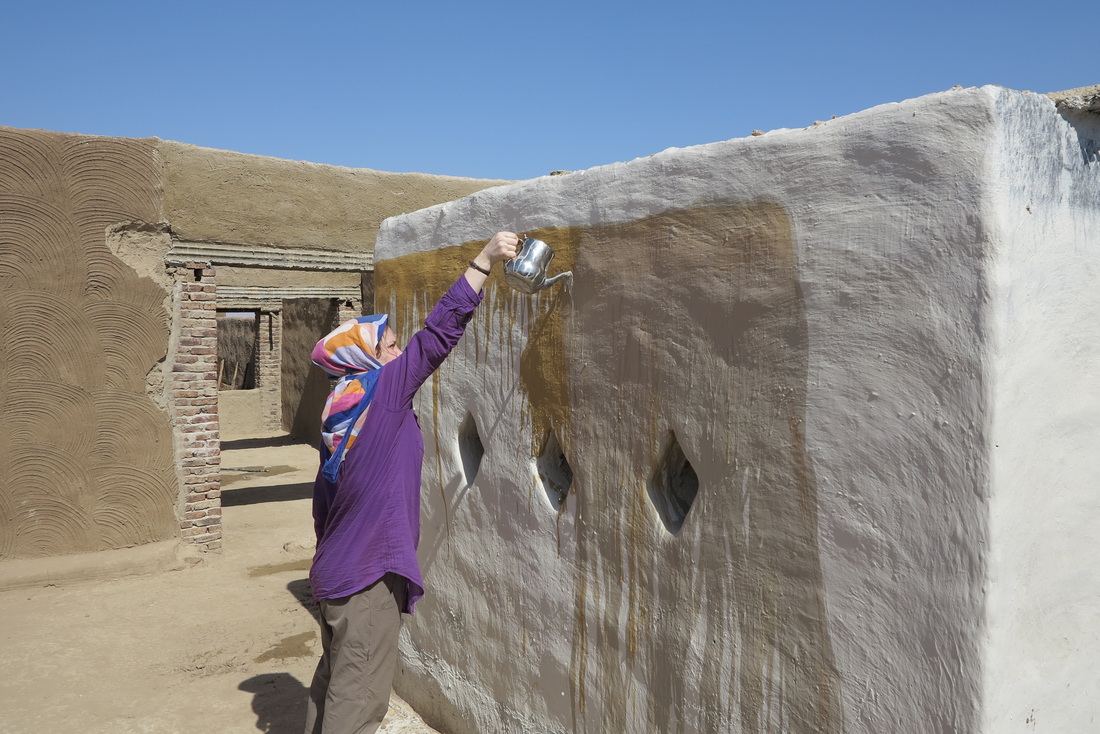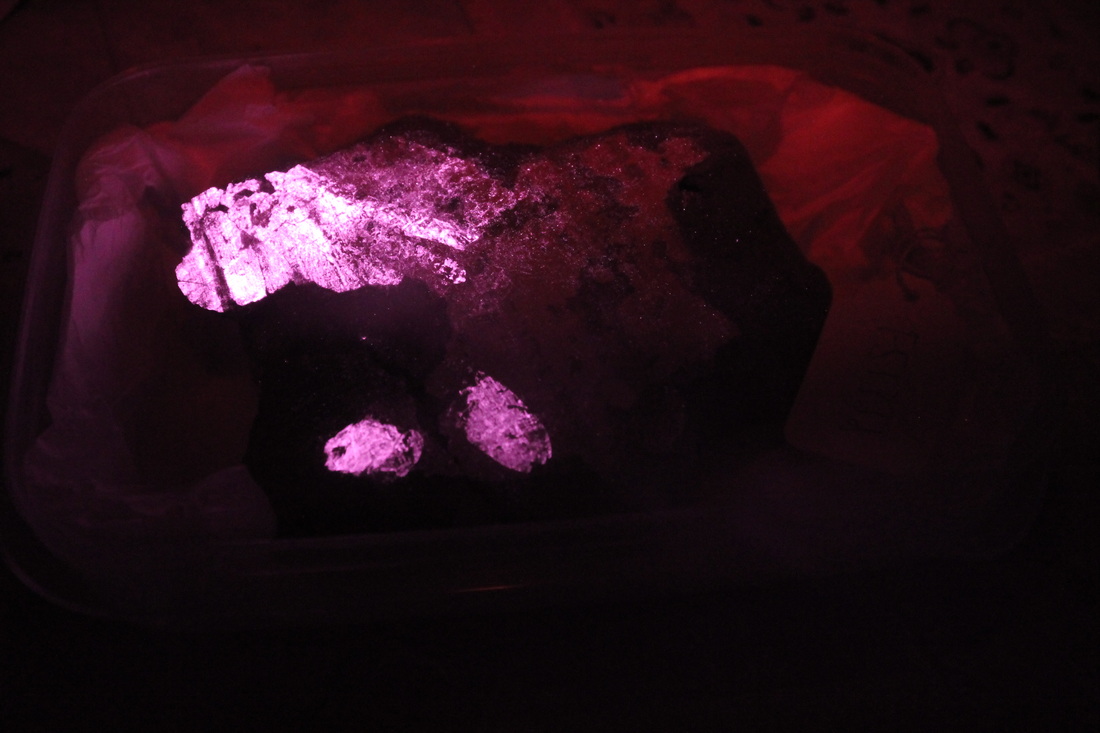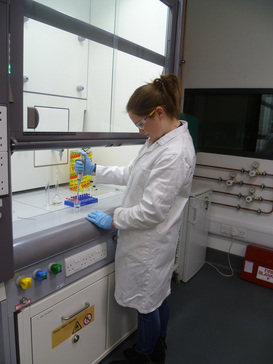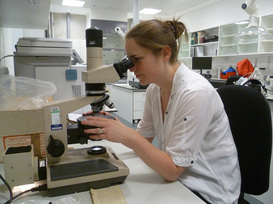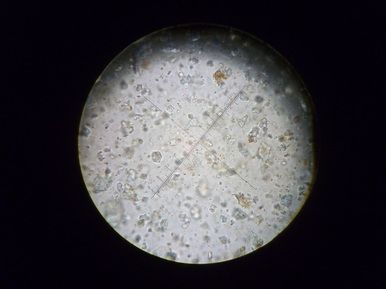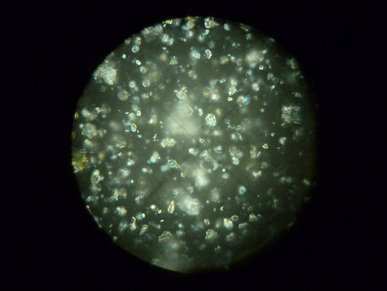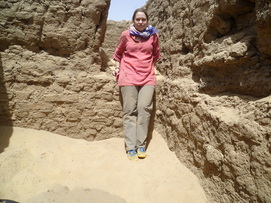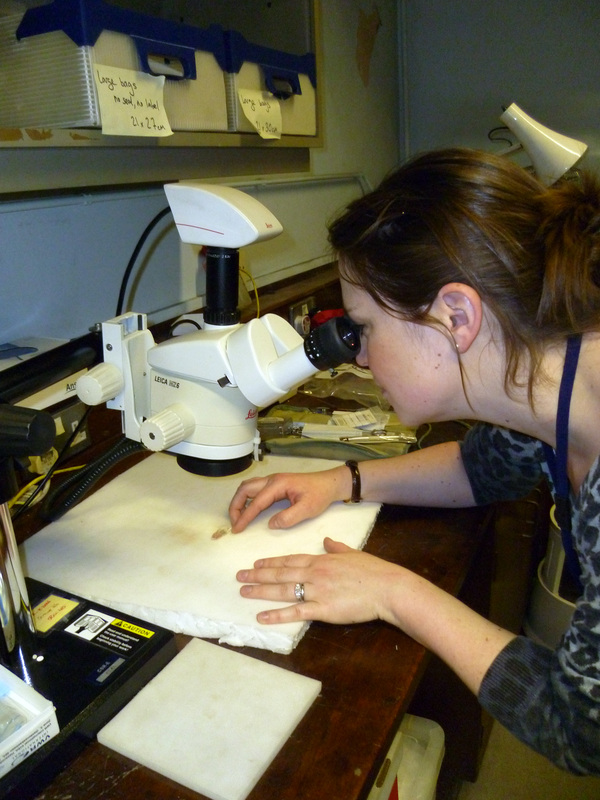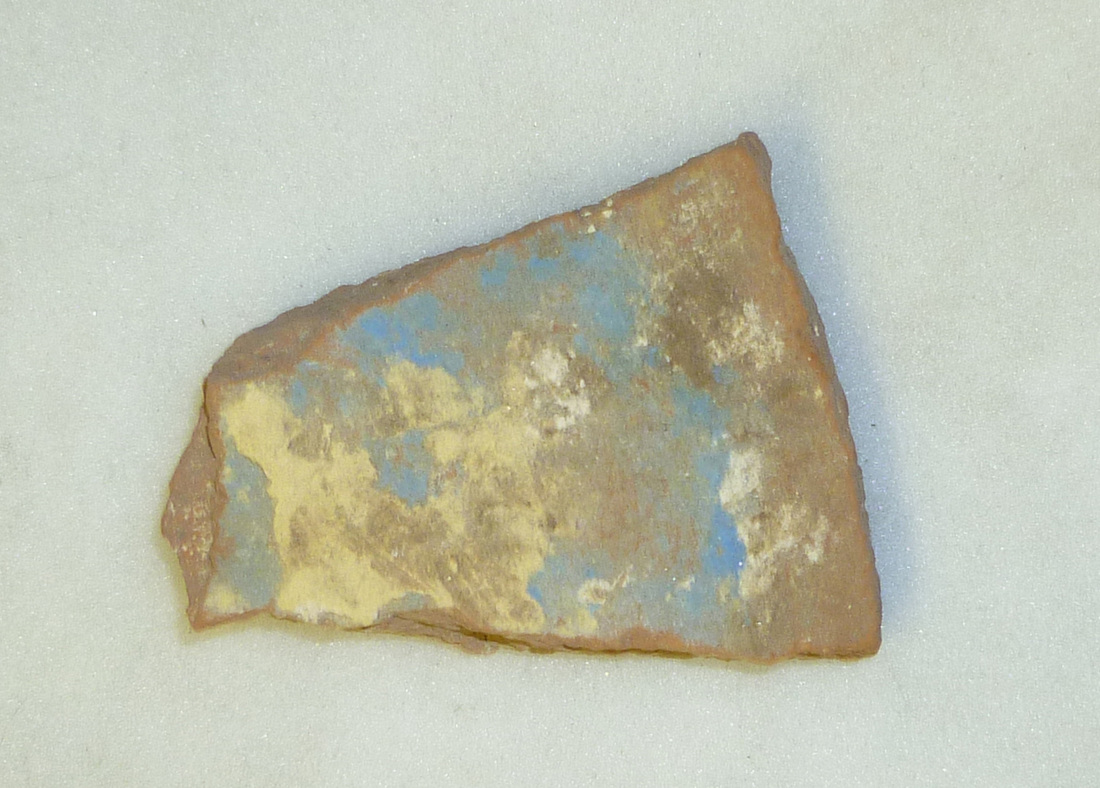This is an AHRC-funded PhD studentship organised as a collaborative doctoral award between the British Museum and the UCL Institute of Archaeology.
This research uses the evidence of colour from a town in ancient Nubia to look at the technology of painted surfaces and the social circumstances in which colour choices were made and executed. The findings will feed into academic debates but also inform conservation decisions at pharaonic sites and in museums with Egyptian collections, wherever colour is found.
Oct 2017
I've been spending some long months writing up, but I'm finally done! Submitting this PhD after the final OK from supervisors. I'm still doing some analysis to keep myself busy!
I've been spending some long months writing up, but I'm finally done! Submitting this PhD after the final OK from supervisors. I'm still doing some analysis to keep myself busy!
Sept 2017
It turns out that there are also colour palettes at Sai, the 18th Dynasty site on the island south of Ernetta, a few kms from Amara West. So this week I flew to Munich (where the Across Borders team for Sai is based) to collect samples from the palettes. Excitingly, some of them seem to contain an organic substance that may have been used as a binder, since they were found alongside paint palettes.
It turns out that there are also colour palettes at Sai, the 18th Dynasty site on the island south of Ernetta, a few kms from Amara West. So this week I flew to Munich (where the Across Borders team for Sai is based) to collect samples from the palettes. Excitingly, some of them seem to contain an organic substance that may have been used as a binder, since they were found alongside paint palettes.
Feb 2017
Had a great time out in Sudan. With the help of the team I made paintbrushes from date palm branches, ground pigment, and painted the dig house walls. I also collected some locally occurring Acacia gum from trees on Ernetta Island - hoping to analyse this to determine variability in monosaccharides within species from a small area.
Had a great time out in Sudan. With the help of the team I made paintbrushes from date palm branches, ground pigment, and painted the dig house walls. I also collected some locally occurring Acacia gum from trees on Ernetta Island - hoping to analyse this to determine variability in monosaccharides within species from a small area.
Jan 2017
After a year of maternity leave I returned to my studies in October 2016. During the excavation season 2016 a large amount of bitumen was discovered in one of the burials. I am in the process of analysing this material by GC-MS. I am also planning one last research trip to Amara West in February to conduct some experiential archaeology. I am hoping to recreate the process of making and applying the paints. I will try to take video!
After a year of maternity leave I returned to my studies in October 2016. During the excavation season 2016 a large amount of bitumen was discovered in one of the burials. I am in the process of analysing this material by GC-MS. I am also planning one last research trip to Amara West in February to conduct some experiential archaeology. I am hoping to recreate the process of making and applying the paints. I will try to take video!
|
August 2015
I have been conducting organic analysis of some of the black paints to look for evidence of the use of bitumen. Definitely two of my palettes contain bitumen, and I am hoping to use the GCMS results to try to identify the geographic / geological source. It looks like the bitumen was used as a solid powder and mixed with a binder, rather than being heated to melt it. February 2015
In January I visited Amara West again for 2 weeks. This time I was taking a few more samples to back up the work I've already started in London. But my main reason for going back was to conduct interviews with the people who live in the areas around Amara West about how they paint their houses and what materials they use. I also took colour samples from Tombos (18th dynasty) and Kawa (8th century BC) to compare to my own samples from Amara West. This is a picture (above left) of me painting a wall with a teapot on Sai Island. I also used a special camera technique called visible-induced-luminescence to look for evidence of Egyptian blue that cannot be seen by the naked eye (picture below left). http://blog.amarawest.britishmuseum.org/2015/01/27/amara-west-2015-blue-who-knew/ |
|
October 2014
I have started on the organic analysis at the British Museum in their new labs in the WCEC. To begin with, all the solvents need to be prepared, and all the samples taken, along with reference samples that the British Museum have collected over the years, including gum arabic, glucose, egg, and gum tragacanth. Then the samples are dissolved in the solvents and injected into the gas chromatography mass spectrometry (GC-MS) machine so see what sugars and lipids (fats) they might contain. |
|
September 2014
My samples from Sudan finally arrived in London in July, and I have been mounting them for polarised light microscopy (PLM). A small sample is taken by scraping the object with a scalpel. This is mounted in MeltMount™ on a microscope slide and then examined in polarised light and crossed polars in a special microscope. This allows all of the components of the paint to be seen and the optical properties of each of the minerals allow them to be identified. The pictures below show the pigment from a ceramic palette with a yellow paint - it turns out that this yellow paint is mostly calcite (calcium carbonate, wihch is white), with some yellow iron oxide particles, which impart the colour. Left: view in polarised light; right: view in crossed polars. |
|
March 2014
I have been out in north Sudan for 4 weeks at the site of Amara West. It was very hot, and some days the nimiti (tiny biting flies) drove us all mad. But it was a great trip - I explored the site, and examined lots of finds for the presence of colour, even a tiny bit. This included all of the grindstones and hammerstones, bags of ochre, lots more ceramic "palettes", coffin fragments, and the walls in the town themselves. We even removed a small section of ancient wall to reveal a better preserved area of plaster. While I was there one of the archaeologists found what we think might be a paint preparation pit in the floor of one of the houses outside the town walls. http://blog.amarawest.britishmuseum.org/2014/03/16/amara-west-2014-beyond-the-muddy-brown/ |
|
February 2014
I am preparing to go to Sudan with the British Museum to look at the site and all the finds they have there with colour. I'm also hoping to get a good look at the ancient walls and maybe find some colour still extant in context. http://blog.amarawest.britishmuseum.org/2014/02/05/amara-west-2014-looking-behind-the-colour/ This is a photo of me examining a small sample under a low powered microscope. In Sudan I won't have much fancy equipment, although I am taking a USB microscope with me, and a portable XRF. The latter identifies elements and might help me to determine which pigments are present, although I also want to take samples to bring back to London for analysis. |
|
January 2014
I have started looking in more detail at the examples of paint that have been brought to London from previous seasons at Amara West. Most of the evidence we have from the site is in the form of paint on ceramic sherds that have been reused as palettes, like the one shown here, with remains of blue and yellow paint. They vary in size from about 5cm across to a size that fits comfortably in the palm of your hand. We also have lumps of raw pigment, prior to grinding, and painted coffin fragments. |

